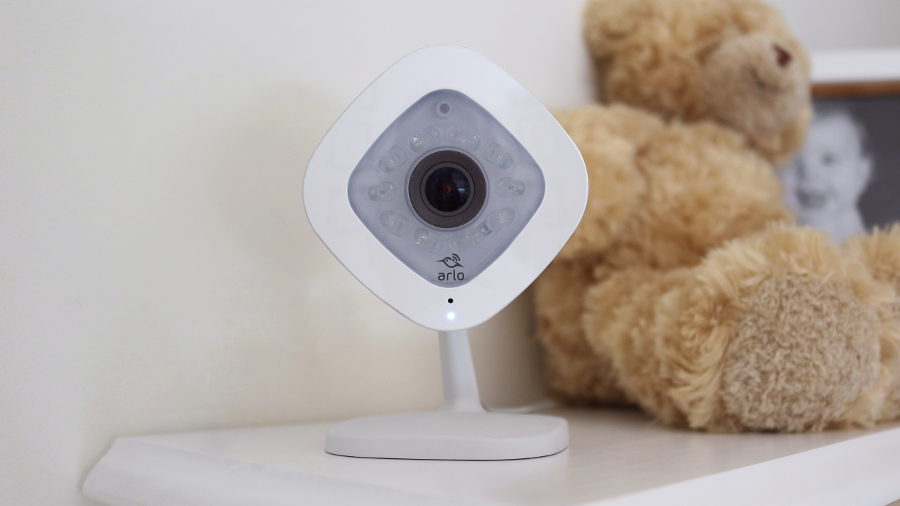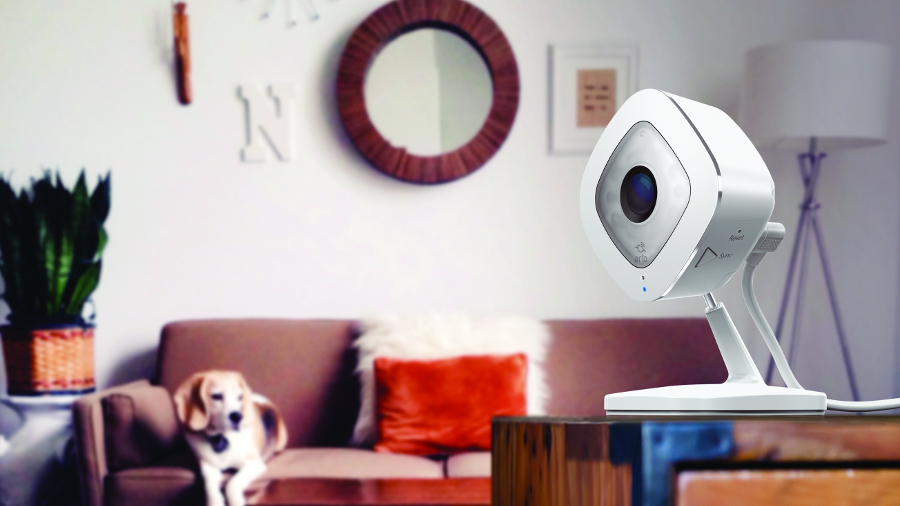TechRadar Verdict
If you’re looking for a discrete and well-made IP camera to monitor your property in Full HD quality, this user-friendly indoor device could be just the ticket – and free 7-day cloud storage is a real boon, too.
Pros
- +
Neat and discrete design
- +
Basic cloud storage subscription is free
- +
Fully articulated and magnetic mount
- +
Reliable motion-triggered recording
Cons
- -
Some setup woes
- -
No microSD card slot
- -
No Ethernet port
Why you can trust TechRadar
This neat and compact IP camera from Netgear offers all of the key features you’d expect from a wireless security camera – Full HD picture quality, motion detection, a slick companion app – plus a few extras. The basic 7-day cloud recording service is free, which is a unique and attractive bonus, and the camera’s design is a cut above the entry-level competition. Reichelt.co.uk supplied our sample Arlo Q for review, and the camera retails at around £185 (about $230, AU$300).

Design and build
This camera’s compact and crisp white form will help it blend into the background, especially when mounted on a white ceiling or wall, but the smart symmetrical design is not unattractive in its own right. The stand mount uses a metal ball and socket joint that feels stiff and well-made, and there’s a strong magnet in the base plate which lets it grip securely to a metal surface without the need for screws.
There’s no Ethernet port, and no slot for a media storage card (though both are available with the Arlo Q Plus), which makes the camera very compact and especially easy to install. Overall, this camera feels superior to the flimsy D-Link DCS-2530L and the floppy Samsung SNH-P6410NB, models which sell for a similar price.
The only button on the camera itself is for triggering the wireless connection process.
Here are the full specs of the Netgear Arlo Q:
Type: IP camera
Location: Indoor
Mounting: Wall/ceiling bracket included
Connectivity: Wi-Fi
Resolution: 1080p
Night Vision: IR LED
Motion sensor: Yes
Audio: Two-way sound
Battery: No
Local video storage: No
App support: Android/iOS
Subscription: From free to £9.99/month
Size/Weight: 70 x 114 x 71mm (W x H x D); 168g
Features
The 130-degree lens is wide enough to take in the whole room if you position the camera well. It can record at three different resolutions, but we’d recommend the best (1080p) if you want to see detail and recognise faces. The Arlo is also fitted with a microphone for sensing sound and a tiny speaker for two-way communication.
All of the other features are accessed via the user-friendly app. Here you can set up the camera from scratch along with your subscription. Then you can choose when you want to receive push notifications – either when motion is detected, or sound, or both (or indeed neither).
The motion detection works at night too, thanks to IR sensors that can see up to five metres into pitch darkness.
The headline feature here is perhaps the ‘Basic’ 7-day storage plan that Netgear is giving away with this camera. This means you can record 24/7 for a full week if you want, before Netgear erases your data from its server. That’s seven days of rolling storage by the way, i.e. every week, not just the first seven days after you start the subscription.
If you want more storage time, the Premier service gives you 30-days for £6.49 per month (around $8, AU$10.50), while the Elite package buys you 60-days for £9.99 per month (around $12.20, AU$16) for up to 15 cameras. What you need, obviously enough, all depends on the size of your business premises and how often you check the footage.

Installation and use
Installing a single Arlo Q is a simple case of screwing the articulated mount to the wall or ceiling. It’s even easier if you’re attaching it to a metal surface, thanks to the magnet. Just be careful not to put the camera down on your laptop because the magnet is strong enough to permanently ruin a spinning hard drive.
Connecting the camera to your network should be a simple matter, but for us, it was anything but. Each attempt requires you to follow the companion app’s setup wizard and then subscribe to Netgear’s service, and each time, it was the very last step that kept throwing up the dreaded error message: ‘Arlo is not available’. Had it worked, building the QR reader into the camera, so that it can read the QR code in the app, seems like a sensible way of getting the two devices to recognise each other.
In everyday use, Arlo Q is one of the easiest IP cameras to access, configure and keep tabs on, thanks to the accessible Arlo app. The live video feed or the latest still shot appears on your smartphone instantly, and from the home page you can quickly scroll through all of your recorded clips. Choose any clip and you have the option to download it to your phone, or share it via email. The settings menu is also widely and logically spaced out on your touchscreen.

Performance
When viewed on a smartphone and recorded in Full HD mode in a brightly lit room, the picture quality is impressive. Vivid and detailed, it’s easy to recognise familiar faces and even read the headlines of any newspaper in the room. Dim the lights and, unsurprisingly, a lot of detail is lost and the image becomes grainy. In complete darkness, the infrared camera can pick up objects towards the centre of the image if they’re closer than five metres.
We found that our somewhat overloaded 10Mbps broadband network dropped the connection from time to time, which would have made us switch to a hardwired solution, but with no Ethernet port, that’s not an option. Instead we had to drop the resolution to 720p, which sadly is a noticeable compromise.

Jim has been evaluating printers for more than twenty years and has, to date, written over a hundred reviews for TechRadar Pro. From pocket printers to industrial dye sublimation, Jim has been there, run the tests and printed the t-shirt. His expertise extends to consumables (paper, ink, toner) and his printer buying guides make it easy to compare these essential peripherals.
